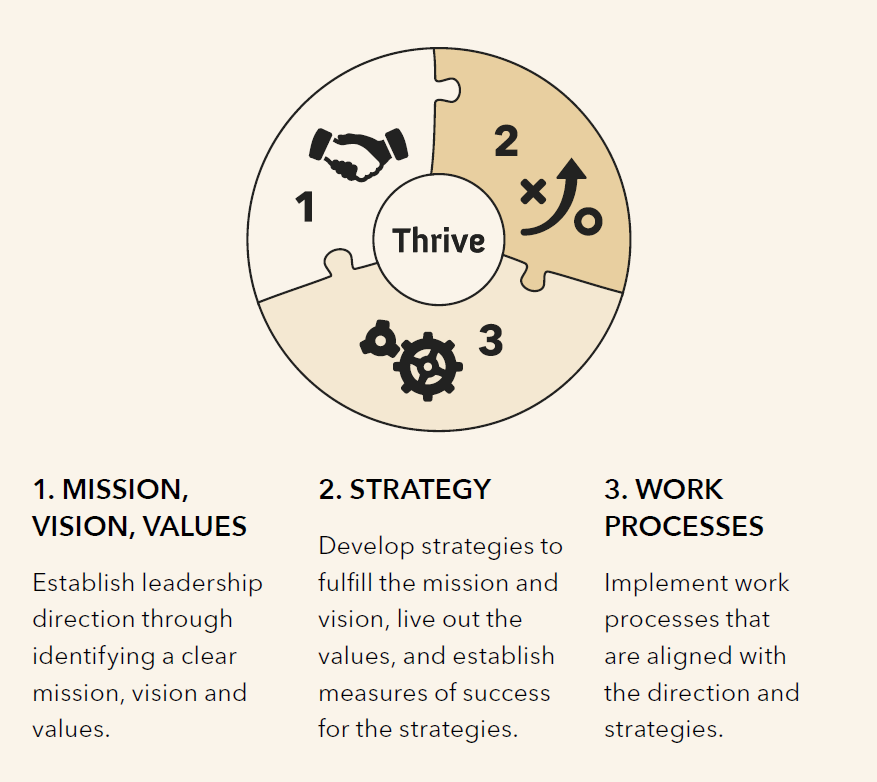What sets a CEO apart? This is certainly a question at the heart of countless business articles, books and forums. CEOs have the critical role of inspiring and leading their organizations to success. The chief executive holds key responsibility for leading the development and execution of the company’s strategy, to create shareholder value, and to achieve great results.
Faced with the reality that the vast majority of businesses never achieve their full potential, what does it take to lead an organization to this kind of success? As a vice president with Bell Northern Research, a subsidiary of Nortel, I set out to answer this question near the end of my career when the president presented me with a challenge. He asked me to demonstrate to the Nortel board that we were effectively spending our $2 billion annual Research & Development budget. In the following paragraphs I share with you the results of my years of research to find the answer. If, like myself, you are deeply committed to excellence and breakthrough, it is my hope that the answers and solutions I found, and which I share with you here, may be a stepping stone to the next level in your business success.
The Journey
Having held progressive leadership roles in my 35-year career with Nortel, seeing it scale from $300 million to $30 billion in revenue, and from 16,000 to 100,000 employees, I relished the opportunity to take on the final challenge offered to me by the president.
Over the years I had been involved in most of the company’s core functions including design, engineering, installation, marketing, and customer service. I had also held diverse positions out of the headquarters in Ottawa, Canada and in three international assignments as country general manager. I knew the company inside and out and was well positioned to lead this challenge. I was also fortunate enough to be given the resources and freedom to fully devote all my energies to this assignment.
As we advanced with the research project, I found myself fueled by my growing curiosity on the subject of business effectiveness. I read countless books, attended conferences, and joined several organizations involved in business quality and excellence. Armed with this information and backed by my experience and in-depth knowledge of the company, I, with two senior colleagues, set out to analyze $10B worth of Research & Development major projects undertaken by the company over the previous 10 years. We methodically reviewed and analyzed successes, failures, and the return on investment of each initiative. After months of learning and analysis, what began to emerge was a clear pattern of what was needed for a project to succeed. What also became clear was that none of the projects we reviewed achieved the level of success that appeared to be possible based on my newfound understanding of business excellence principles.
As part of the research I also found that the company more broadly lacked organization-wide approaches to achieving consistent, superior results in all areas of the company’s business. Chief among the deficiencies I observed was the lack of consistent language throughout the company both in the definition of the work being carried out and the metrics being used to measure performance. Whether it was Research & Development, engineering, marketing, accounting, sales, human resources, administration or legal, each had its own way of expressing what it did and what good performance looked like. This lack of consistency in defining work and performance stayed with me throughout my research as a key issue that I believed, if solved, would be a major leap forward in the ability for the CEO to more effectively meet his core responsibilities and maximize value for shareholders.
As I continued to study and search for tools that could solve the various challenges I observed, two initiatives stood out to me as providing the greatest help to organizations in improving business results. These were the Malcolm Baldrige Performance Excellence Program, and the Harvard business research by Kaplan and Norton resulting in the breakthrough “Balanced Scorecard.”
Malcom Baldrige
During the 1980s, the United States identified a growing need to respond to Japanese competition and to improve national quality-driven productivity. Over the course of the decade, the Reagan Administration ushered in a renewed national emphasis on defining and promoting best-in-class business management and instituted the Malcolm Baldrige Program and Award in 1987.
The Baldrige initiative served to reduce or eliminate the competitive gap and encourage organizations to invest in quality management efforts. The Baldrige framework offers a set of comprehensive criteria for business excellence in seven categories, with each category given a score that adds together to total 1,000 points. When applied and measured, these categories help drive continuous
improvement in delivering product and service excellence.
Today the Malcolm Baldrige National Quality Award (MBNQA) is one of the most prestigious honors in the United States and an international benchmark for organizational excellence. Several studies have demonstrated its effectiveness and benefits to the United States economy.
In 2011, Albert A. Link of the University of North Carolina at Greensboro and John T. Scott of Dartmouth College conducted a study that found that the benefits of the Baldrige program outweigh the overall cost by 820 to 11. From 1994 through 2004, the Baldrige Performance Excellence Program conducted stock performance studies of Baldrige Award winners, and found that the Baldrige group consistently outperformed the S&P 5002. In 1998, a joint study by Professors Vinod Singhal of the Georgia Institute of Technology and Kevin Hendricks of the University of Western Ontario found that compared to control groups, quality award recipients experienced 44 percent higher stock price return, 48 percent higher growth in operating income, and 37 percent higher growth in sales3.
Balanced Scorecard
The Balanced Scorecard (BSC) was introduced in the early 1990s by Harvard professors Robert S. Kaplan and David P. Norton. In their research, Norton and Kaplan set out to discover what measures of performance were used by best in class companies. They discovered that top performing companies use a balance of performance indicators that go beyond financial measures by also considering customer, business processes, and learning measures. They also observed that these measures were focused on the success of the company’s implemented strategies in addition to operational measures such as revenue and cost.
The BSC advocates that these four perspectives are interdependent. Learning influences better business processes, which leads to increased value to the customer, and finally results in improved financial performance. Owing to its simple yet complete approach, businesses adopting the BSC approach quickly began to see stunning benefits. A few decades later, the approach remains one of the most popular and extensively used strategic management systems in business to effectively align and continuously evaluate and adjust business activities to the vision, mission, and strategies of the organization.
Implementing Baldrige at Nortel
Convinced of the comprehensive effectiveness of the Baldrige Program, I led a team of colleagues in convincing the Nortel CEO to implement an Internal Nortel Award modeled on the MBNQA. We developed the infrastructure to establish this award by developing a training program for assessing the various divisions within our organization, certifying examiners and senior examiners, and launching a global campaign to encourage the many divisions around the world to assess themselves and submit an application that would be examined and scored by our assessment team.
After following this award process for three years as a senior examiner, I noticed two trends. First, regardless of perceived success, every division doing an assessment for the first time scored less than 200 out of 1,000 points allocated to the seven Baldrige categories. This was a significant finding—it demonstrated the extent of the quality gap, highlighting how much was “being left off the table,” so to speak. It was also significant insofar as it demonstrated the substantial potential that existed across the company for increased efficiency and improved results.
Second, I noticed a common and repetitive thread of weaknesses in the various divisions we assessed. To get a more detailed understanding of what I was observing, I established a team to undertake a comprehensive review of 35 completed assessments. The analysis confirmed my suspicion, and the team was able to effectively validate and characterize in detail the five key weaknesses common to all organizations. These included:
- Leadership direction not clearly articulated
- Vision, mission, strategies, processes, and metrics not linked between the different levels of management
- Processes for both leadership and work not defined and linked
- Framework to ensure fact-based decision-making not established
- Approach for systematic continuous improvements not defined
This discovery fascinated me. Over the course of the next few years I observed the leaders of the organization endeavor to address each weakness, one at a time, and witnessed how long it takes to move up the Baldrige point scale. I also recognized during this time that while the Baldrige model brilliantly defines what must be addressed to achieve business excellence, it does not outline steps on how to practically implement approaches to meet the defined criteria. In light of these many observations, it became apparent to me that a solution was needed to solve these five issues and to position organizations to quickly achieve higher scores and thus achieve greater effectiveness.
“SIMPLY PUT, CLARITY IS POWER.”
Developing The Global Thrive System
Undaunted, I set out to develop a whole-of-organization strategic business leadership and management system that would address these challenges and position an organization early on to operate at higher levels of effectiveness. I did this by translating the five common weaknesses into key system specifications, while adding the following features to accelerate results:
- Ensure that all areas of focus in the seven Baldrige categories were simultaneously taken into account in implementing the business system.
- Integrate the Balanced Scorecard principles and cascade them to every level of management and for all work
- Address the problem of consistency I had observed during my research by defining and implementing a “common language” for work and performance in any organization. In particular, to define work of any kind as a “service,” with a focus on identifying only work that contributes to quantifiable outcomes or results having clear demonstrable value and, thus, weeding out churn and activities with no value outside the work unit.
What emerged was a system that combined the two most widely-used and proven cornerstone methodologies for business excellence, woven together to produce a simple, clear, and scalable business framework that positions organizations to remedy the most common business challenges, transforms the business culture, and accelerates business achievement.
So, how does it work? The system clearly defines and cascades an organization’s mission, vision, and strategies at all management levels by clearly defining and aligning all strategic management “functions” of the organization. The system further outlines all “services” under each management function, each defined with a tangible outcome that can be tracked by performance measures.
For all functions and services, the system then defines cascading strategic performance metrics, each aligned and linked to the company’s overarching mission, vision, and key strategies. The system is designed with flexibility in mind. The system’s two foundational pieces – the functions and services building blocks – offer the benefit of infinite scalability, capable of supporting the smallest start-up to the largest organization, and able to support business excellence objectives as the company grows.

In sum, the system brings “feet” to company vision, offers clarity in all areas, and establishes a culture of understanding, engagement, and trust at all levels. It focuses management on strategic leadership while simplifying and streamlining performance measurements and standards across all functions and services. Further, the system is enabled by a web-based software application that tracks all information and data, providing management with tailored reports for any area of the business, and offering real-time access to information needed to support decision-making.
For the CEO, these features are significant. The system provides the clarity and freedom needed to focus on strategy and avoid the pitfalls of operations such as needless troubleshooting and fire fighting which can so frequently weigh down leaders in the course of daily business. Rather, the system offers the CEO freedom to focus on stewarding the strategic direction of the organization. It brings about a shift in corporate mindset and roots a culture of excellence, discipline, and trust throughout the organization by empowering managers and workers at all levels in strategic thought and focused action. Simply put, clarity is power.
What Every CEO Needs to Know
Over the course of my many years of research, assessment, and application of business excellence, first at Nortel and then as a consultant using the Global Thrive System, I understood that there is no “magic bullet” to achieving great results. Jim Collins, in his bestselling book, Good to Great, sums it clearly: it takes “disciplined people, disciplined thought, and disciplined action” to achieve breakthrough. This is what I believe every CEO needs to know. This is what it takes to lead an organization to excellence and outstanding performance. And this is where the Global Thrive System can offer a leg up.
Infinitely scalable, the system delivers a framework for sustained business discipline at all levels and in all areas of the organization – where purpose and direction are clearly articulated and understood by all, where facts needed for decision making are readily and continuously available, where a culture of trust and excellence takes root and, most importantly, where breakthrough results are achieved. Together, these attributes help achieve the mission, fulfill the vision, and lay the foundations for a world-class organization.
As Christian leaders we have an incredible opportunity to lead not only as individuals of faith – expressing and sharing the character and nature of God with those around us – but also to lead as agents of radical transformation in our workplaces and in the broader corporate arena. From the highest strategy to the smallest task, I believe that when we set the foundations for disciplined thought and disciplined action at all levels and in all areas of the organization, we make clear the way for excellence to flourish and for breakthrough to happen. May we see a company of bold Kingdom leaders rise to the challenge of business excellence and walk in faithful expectancy to see profound transformation at the heart of the companies we are called to lead. May I encourage you to take up this charge and pursue the rewards of excellence.
References
- Albert N. Link and John T. Scott. NIST Planning Report 11-2: Economic Evaluation of the Baldrige Performance Excellence Program. December 2011. Available online at: www.nist.gov/director/planning/upload/report11-2.pdf
- www.nist.gov/news-events/news/2001/04/baldrige-index-consistently-outperforms-sp-500 Studies available online at: www.nist.gov/baldrige/baldrige-stockstudies
- Kevin B. Hendricks and Vinod R. Singhal. The Long-Run Stock Price Performance of Firms with Effective TQM Programs. May 1998. Available at: www.pubsonline.informs.org/doi/abs/10.1287/mnsc.47.3.359.9773?journalCode=mnsc Related article available at: www.qualitydigest.com/nov98/html/tqm.html
Are you a key player in the seven mountain movement?
We are developing strategies to influence every sphere of society. We want to connect with you and others like you.




